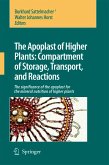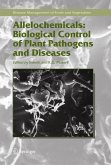There are many good books in the market dealing with the subject of allelopathy. When we designed the outline of this new book, we thought that it should include as many different points of view as possible, although in an integrated general scheme. Allelopathy can be viewed from different of perspectives, ranging from the molecular to the ecosystem level, and including molecular biology, plant biochemistry, plant physiology, plant ecophysiology and ecology, with information coming also from the organic chemistry, soil sciences, microbiology and many other scientific disciplines. This book was designed to include a complete perspective of allelopathic process. The book is divided into seven major sections. The first chapter explores the international development of allelopathy as a science and next section deals with methodological aspects and it explores potential limitations of actual research. Third section is devoted to physiological aspects of allelopathy. Different specialists wrote about photosynthesis, cell cycle, detoxification processes, abiotic and biotic stress, plant secondary metabolites and respiration related to allelopathy. Chapters 13 through 16 are collectively devoted to various aspects of plant ecophysiology on a variety of levels: microorganisms, soil system and weed germination. Fundamental ecology approaches using both experimental observations and theoretical analysis of allelopathy are described in chapters 16 and 17. Those chapters deal with the possible evolutionary forces that have shaped particular strategies. In the section named "allelopathy in different environments", authors primarily center on marine, aquatic, forest and agro ecosystems. Last section includes chapters addressing application of the knowledge of allelopathy.








